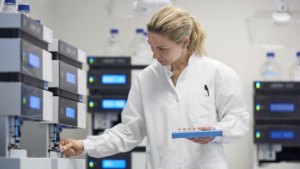
reMYND in €350m diabetes deal with Novo
Belgian reMYND N.V. has out licenced worldwide commercialisation rights for its small molecule programme ReS39 in diabetes to Novo Nordisk A/S. The drug impedes death of insulin-producing beta cells by preventing the formation of cytotoxic islet amyloid polypeptide (IAPP) aggregates.
It’s the second big deal for the Belgian specialist for small molecules preventing protein misfolding disorders or amyloidoses. Under the contract, Novo will make an undisclosed upfront payment and will pay milestones and R&D funding totalling €350m to reMYND. Novo will gain the exclusive worldwide commercialisation rights for ReS39 as a diabetes therapy. reMYND, however, remains the holder of the rights for RES39 as a treatment for NASH (non-alcoholic steatohepatitis) and Parkinson’s disease. Back in 2010, reMYND entered into a strategic alliance with Roche, holding out $637 in payments, to develop first-in-class disease-modifying treatments, which could slow down neurodegeneration in Parkinson’s and Alzheimer’s patients by inhibiting ?lpha-synuclein and tau toxicity. The company holds patents on several small molecule compounds that prevent protein aggregation, the underlying cause of a range of neurological and metabolic diseases.
Current diabetes therapies are only symptomatic but do not address the underlying beta-cell degeneration in course of type I and type II diabetes, which affect 170 million people worldwide. According to reMYND, the company’s lead diabetes program ReS39 sustains and even doubles the endogenous insulin production capacity of the pancreas by restoring beta-cell function in both T1DM and T2DM animal models through restraining the formation of oxidative stress. In addition, ReS39 reduces liver weight and its triglyceride content, making it also relevant for NASH and also targets alpha-synuclein driven neuronal degeneration, a process involving oxidative stress, which fundamentally underlies dopaminergic degeneration in Parkinson’s disease.
The underlying biochemical defects of type II diabetes, which makes up 90% of all diabetes cases, have not been fully elucidated. However, early studies of ? cells from type II diabetics revealed the presence of proteinaceous plaques composed of a secreted protein called the islet amyloid polypeptide (IAPP) in 90% of patients that were absent in healthy individuals. The causal link between IAPP and type II diabetes was strengthened following the discovery that overweight transgenic mice readily developed symptoms characteristic of type II diabetes after over-expressing the human IAPP variant. The pH, Zn(II) levels and binding to insulin-related peptides have been shown to affect hIAPP aggregation. Though details haven’t been published on the mode of action of reMYND’s diabetes drug, it is probable that it targets the interaction between IAPP and Zn(II) ions, because binding of Zn(II) alters the conformation of the protein and low pH and high Zn(II) concentrations in IAPP granules within ? cells appear to affect IAPP aggregation.
Although the primary defects in diabetes and AD are localized in different tissues, epidemiological studies have shown that the two diseases share risk factors (e.g., obesity, high cholesterol, high blood pressure), and diabetics have an increased risk for developing AD. What’s more, it is established that the amyloid proteins, amyloid-? (A?) and the islet amyloid polypeptide (IAPP), are key players in AD and type II diabetes, respectively.


 BIOCOM / aminul788 - Adobe Stock
BIOCOM / aminul788 - Adobe Stock Bayer Co.Lab
Bayer Co.Lab